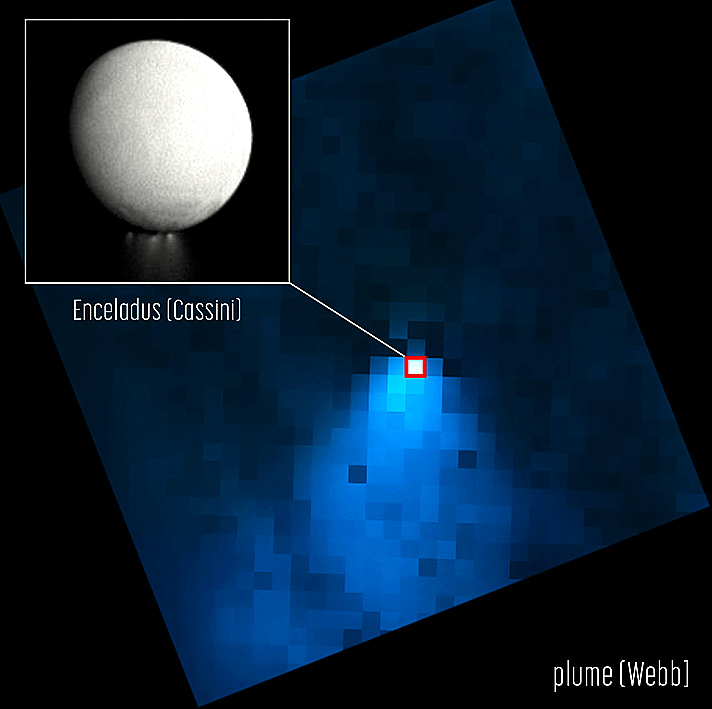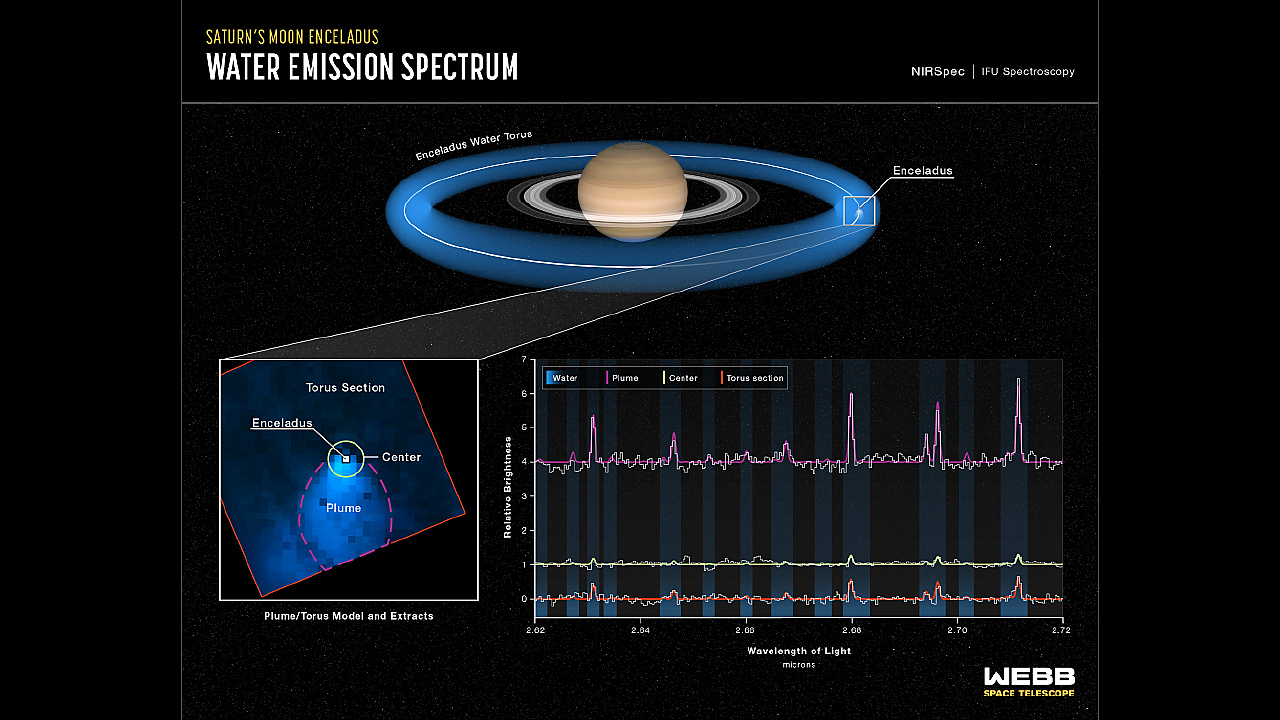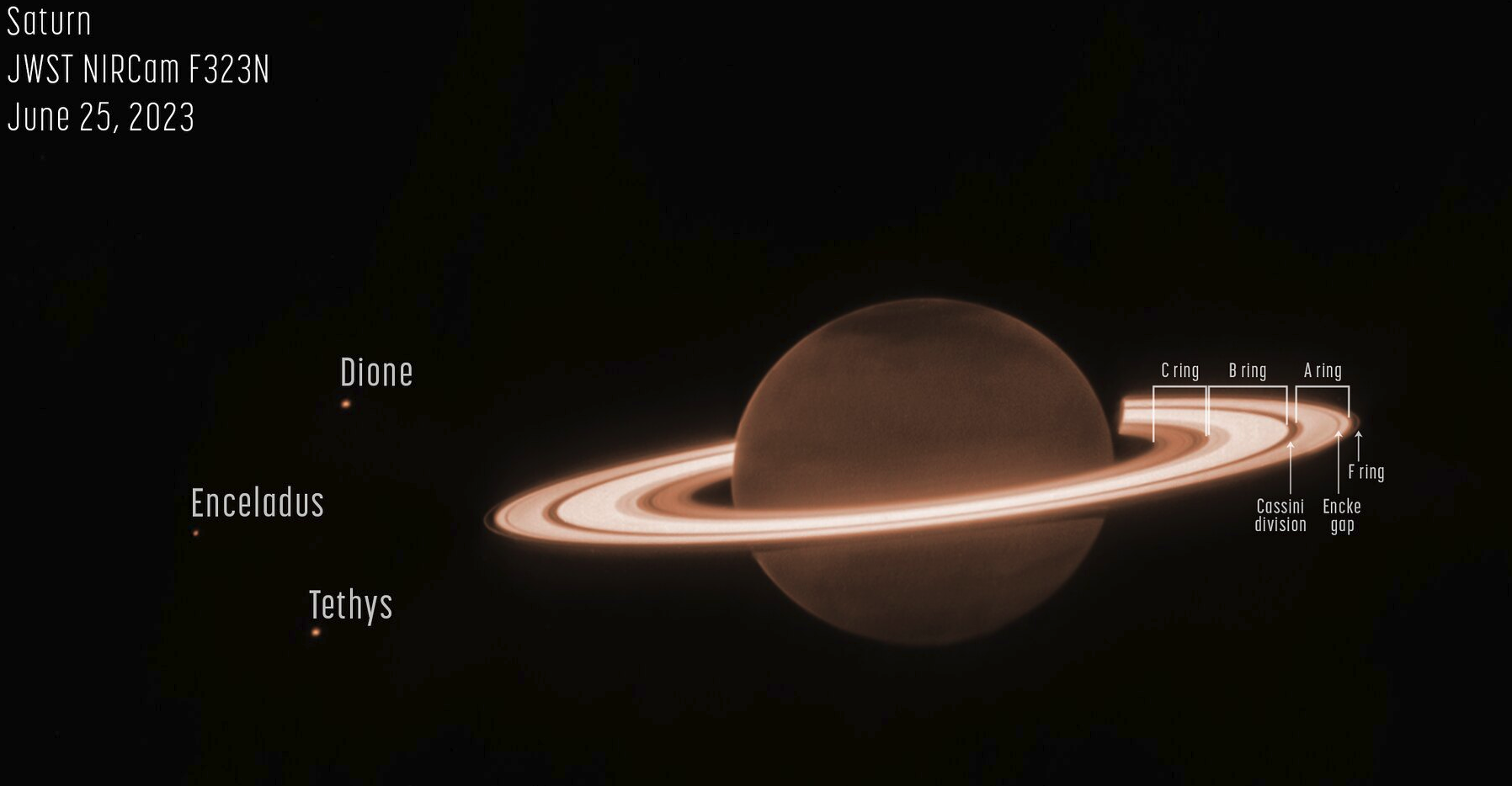Saturn's Glory
Saturn and 3 moons in IR (credit: NASA/JWST)
The James Webb Space Telescope (JWST) turned its camera to view the ringed planet Saturn. It captured a glorious image in infrared light. Three of Saturn's moons, Dione, Enceladus, and Tethys were also seen as small orange dots beside the ringed giant. According to NASA, Saturn is dark in the new image because methane in its atmosphere absorbs most of the sunlight falling on it. Saturn's icy rings remain bright, leading to the unusual appearance in the image. The planet's rings consist of rocky and icy fragments, ranging from less than a grain of sand in size to some as large as mountains on Earth.
Previously, the Agency used the Webb to view Enceladus, the icy moon, and viewed a large plume of water erupting from the southern polar region feeding Saturn's outer ring. Between its icy crust and rocky core is a global ocean. Geyser-like volcanoes spew jets of particles, vapors, and compounds from crevices on the moon’s surface known as ‘tiger stripes.’ An analysis of the plume showed the proper signal for water vapor. The moon, only 313 miles across, is a prime target for investigating the presence of life beyond Earth.


Enceladus geyser plume and water emission spectrum (credit: NASA/JWST)
Saturn’s atmosphere showed unexpected details in infrared light as well. This was the first time that the planet’s atmosphere has been seen in a particular IR wavelength, that is unique to an IR sensor in the JWST's camera. The dark, diffuse structures in the northern hemisphere do not follow the planet’s lines of latitude, so the image lacks the typical yellow-striped appearance seen in visible light of Saturn’s atmosphere. The patchiness is reminiscent of stripes and waves seen in gases high above the main clouds in earlier Webb images of giant Jupiter.

Previous Saturn missions have included Pioneer 11, the Voyager probes, Cassini, and the Hubble telescope which all tracked its atmosphere, rings, and moons. The Webb's first view offers a hint at what thi new observatory will add to Saturn’s amazing catalog as it continues peering at the planet. WHB